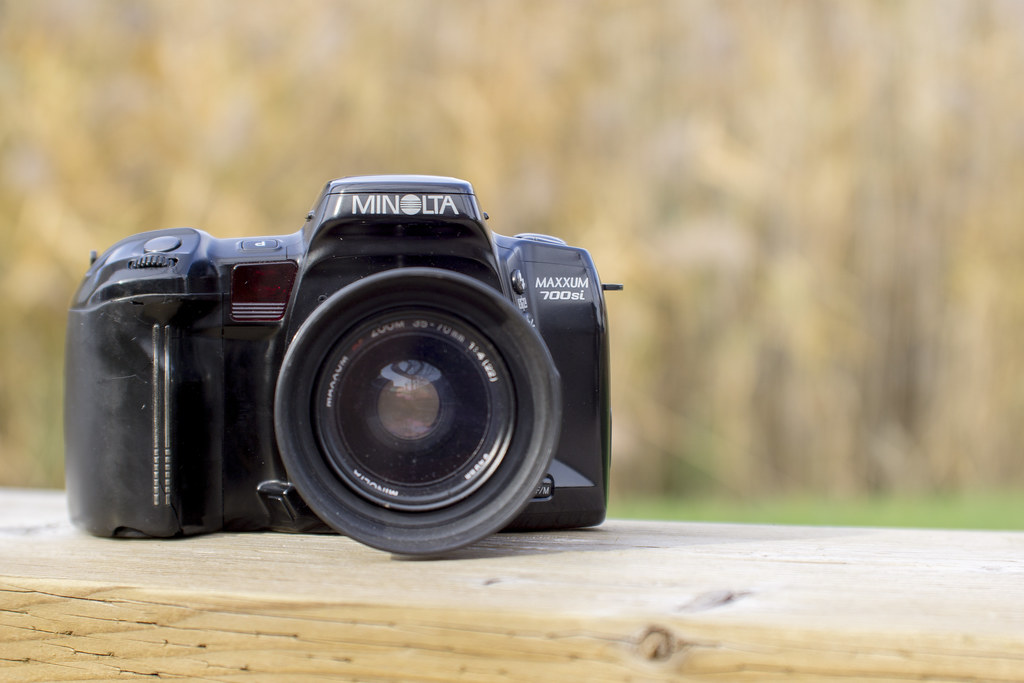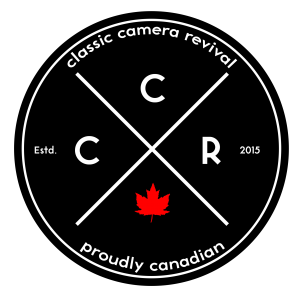These cameras go by many names, Alpha, Dynax and of course we in North American call them Maxxum. They are the first commercially successful autofocus SLRs, they changed the came, they set the trend. Today James and Alex are again joined by Marwan of Silvergrain Classics who isn’t only a Leica user, he also uses Minolta Dynax (in his case) and joins us to share his wealth of knowledge as we go from the 7000 to the 7 and almost everything in between. Plus with the return of Marwan, Silvergrain Classics has a special offer for all our listeners, if you order a subscription or individual issue of the Silvergrain Classics Magazine, use the code CCR21 at check out for 10% off your order. Also the first three people to email us (classiccamerarevival[at]gmail[dot]com) with your name, address, and a little note about CCR you will receive a free copy of the latest edition of Slivergrain Classics!
The photographic world had been toying with the idea of autofocus since the early 1970s, even Nikon had attempted it with a special lens on the F2. Like any invention, it’s hard to pin down the exact inventor of an autofocus system. Although Honeywell is generally credited with an early functional system and Konica released the first compact camera to have autofocus. The next step was to bring that system to an interchangeable lens camera, the SLR! Nikon, Canon, Pentax, and Chinon all released early systems that had the autofocus motor drive in the lens itself (something that would come back later). But these early attempts were clunky, slow, and heavy. And often resulted in dead-end systems that didn’t go anywhere. The Nikon F3AF only had two lenses and needed a special finder. Then out of the blue in 1985 Minolta pulled a ‘Sputnik’ and launched their ɑ (alpha) system. The first camera, the ɑ-7000, also known as Dynax 7000 or Maxxum 7000 (Europe and North American respectively) was a game-changer. It brought a commercially successful autofocus system to the market with a set of seventeen lenses and a motor drive built into the camera body. The lenses were no slouches either, many were based on Leica optical formulas. Minolta also redesigned the cameras, with sharp angles along with screens and buttons to control functions rather than knobs and physical displays. While the ɑ-7000 was aimed at the advanced amateur market, they also released an entry-level camera, the ɑ-5000. And a professional version, the ɑ-9000. The 9000 was an interesting camera. While the other two Maxxum’s were buttons and screens, the 9000 went with a hybrid design. It had autofocus, some screens and buttons. But the primary photographic functions remained controlled by physical knobs and physical displays. It also lacked an internal motor drive, going for a manual film advance with an autowinder or motor drive being optional accessories. Shortly on the heels of the original line of cameras, Minolta released their second generation in 1988, or the i series. The second-generation offered up the same button and menu-based system and faster autofocus. But like everything in the late 1980s, it had to be reprogrammable. Minolta achieved this with a propriety chip system. The one thing that lacked in the i series was a professional camera, instead they offered up an upper-mid-tier camera in the form of the ɑ-8000i.

When Canon introduced their EOS system, Minolta struck back with their third-generation autofocus camera. These cameras were far smoother in design than the earlier releases, even compared to the i series. The xi series had blistering fast autofocus compared to earlier ones and also used the idea of fuzzy-logic and with a xi lens, it would even guess not only the focus point but also a zoom point for best composition. Minolta expanded their SLR offering even more with their third-generation offerings. They had the usual ɑ-7xi as the advanced offering and the upper-entry level ɑ-5xi. But also two lower-their entry-level cameras in the ɑ-3xi and ɑ-2xi. But it also marked the return of a professional offering the ɑ-9xi. The 9xi followed the pattern of the whole xi series with smooth lines and a total lack of buttons. But it also included is one of the fastest shutters ever produced, clocking in at 1/12000″. But now the competition had woken up and Minolta had to play catch-up. The trouble is that the xi split the opinions of many photographers, the 1990s were a weird time for photography.

Minolta’s fourth-generation SLR, the si series again offered moderate updates to metering and autofocus speed. But they dropped a lot of the stranger parts that made up the earlier xi series. But again, they skipped over a professional offering but returning to the lower-tier flagship in the ɑ-800si. But the 800si offered up something that was new for the time, the HSS system. The HSS system allowed the camera’s internal flash to act as a master strobe to trigger off-camera Minolta flashes in the earliest form of a wireless strobist system, similar to the much later Nikon Creative Lighting System. Another noted camera is the ɑ-600si Classic, which returned some physical controls.

The fifth and final generation of Minolta SLRs paired things down the return of a professional camera the ɑ-9 became the ultimate SLR in the Minolta lineup. Taking all the best options from previous models, fast shutter, HSS, built-in flash, and a carbon fibre shutter curtain. They also had three lower-tier systems the ɑ-3, ɑ-4, and a-5. And the last SLR and often more desired than the ɑ-9, the ɑ-7. The one thing to note is that both the ɑ-5 and ɑ-7 formed the base for the Konica-Minolta dSLR offerings. Another note is that out of the box, the ɑ-9 does not support SSM lenses, but some were upgraded, look under customer 20 and if there’s a fourth option, your camera is updated. And the design linage of the ɑ-9 lives on with the Sony ɑ-900, ɑ-99, and ɑ-99ii.

It is also worth noting that the Alpha lenses still stand up today and Minolta had several firsts for these autofocus lenses. Many of the original offerings are based on Leica optical designs and lenses like the 35-70 f/4 is a compact mid-range zoom no bigger than your average prime lens. It is paired with the 70-210mm f/4 known as the beer can is probably your best starting points for an Alpha system and can be had at a fair price. They also offered up an 80-200mm f/2.8 APO lens, a first in the world and the only reflex lens in autofocus the 500mm.
Want a subscription to SilverGrain Classics and are a fan of Classic Camera Revival? Visit their shop online and buy a magazine or a subscription? Looking for a good spot to get your gear and material fix check out Burlington Camera (Burlington, ON), Downtown Camera (Toronto, ON), Film Plus (Toronto, ON), Belle Arte Camera (Hamilton, ON), Pond’s FotoSource (Guleph, ON), Foto Art Camera (Owen Sound, ON). Out West there’s Kerrisdale Cameras (BC), The Camera Store (Calgary, AB) and Beau Photo Supply (Vancouver, BC). Additionally you can order online at Argentix (Quebec), buyfilm.ca (Ontario), the Film Photography Project or Freestyle Photographic. Looking for development options, check out these labs that have our support, Boréalis Photo Lab, Old School Photo Lab, The Darkroom, and Film Rescue International.
Also you can connect with us through email: classiccamerarevivial[at]gmail[dot]com or by Facebook, we’re at Classic Camera Revival, Twitter @ccamerarevival, and Instagram (@classiccamerarevival)!

